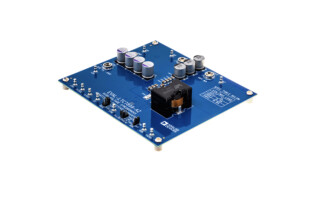Back to Basics: Moore’s Law and Hardware Obsolescence
October 25, 2024
Blog

In our last article we talked about how tech becomes obsolete, with a focus on planned obsolescence. Today, we’re going to move on to a different form of obsolescence: hardware advancement.
Welcome to Back to Basics, a series where we’re going to be reviewing basic engineering concepts that may require a more complex explanation than a quick Google search could provide.
The hardware we use today is, quite literally, billions of times better than it was 40 years ago. This advancement of how fast our computers can process data and how much memory they can hold forces us to keep buying new computers to keep up with the software being developed for them.
A good rule of thumb for most computers is that they take about two to four years to become obsolete, replaced by better technology. Most of us generally understand that idea with regard to our own personal technology (like smartphones), but there is an actual principle behind it.
Less is Moore
In 1965, Gordon Moore, co-founder of Intel, published a paper titled “Cramming More Components Onto Integrated Circuits” where he focused specifically on the transistor count in ICs. Moore made some wild (for the time) guesses about how fast the tech industry would grow. In a time where a computer cost upward of $15,000, he guessed that it would be economically viable for the number of transistors in a circuit to double every one to two years — a concept that then became known as Moore’s Law — sound familiar?
To better understand the audacity of this claim, we need to understand that at the time, the number of transistors per circuit was around 3,500. As we discussed in ARTICLE, transistors are the cornerstone of how computer hardware works. As a general rule, the more transistors there are, the more numbers a computer can crunch.
The interesting thing about Moore’s prediction is that he was actually right. As time went on, the industry standard was a doubling rate of the number of transistors per circuit, meaning that the processing speed of computers doubled every one to two years.
To reiterate, computers have gotten about twice as powerful every 18 months for the last 50 years, taking us from 3,500 transistors to over 100 billion.
It’s Gettin’ Hot in Here
So where does this leave us? When our tech advances in the same way that rabbits breed (exponentially), does this mean that we’ll be stuck in this two-ish year loop of obsolescence caused by Moore’s Law? Well… maybe not.
Moore’s Law is technically not a scientific principle. It was a guess, albeit a correct one, but it has limits. Now, in 2024, members of the tech industry are questioning whether it’s still relevant.
The problem with transistors is that each one generates some amount of heat. When you pack billions of heat generators into a teeny-tiny little space, they get VERY HOT. At this point, physics itself is stopping us from continuing to cram more transistors into circuits.
While some companies have made statements saying that Moore’s Law is dead because of this physical limitation causing further innovation to be economically unviable, Intel has stated that they believe they can continue to advance Moore’s Law even further, bringing us to a whopping 1 trillion transistors in the next 10 years.
Regardless of whether Moore’s Law continues to apply, we’re starting to end up with a surplus of computing power that often goes untapped. Our hardware is more powerful than it's ever been, but what about our software? In our next article, we’ll look at how this expanding hardware landscape has shaped the software we create, and how all of this ties back to obsolescence.
Additional Resources:
Check out some more Back to Basics:
Learning a New Language, Software Edition (Obviously)
Back to Basics: Getting Connected to IoT





